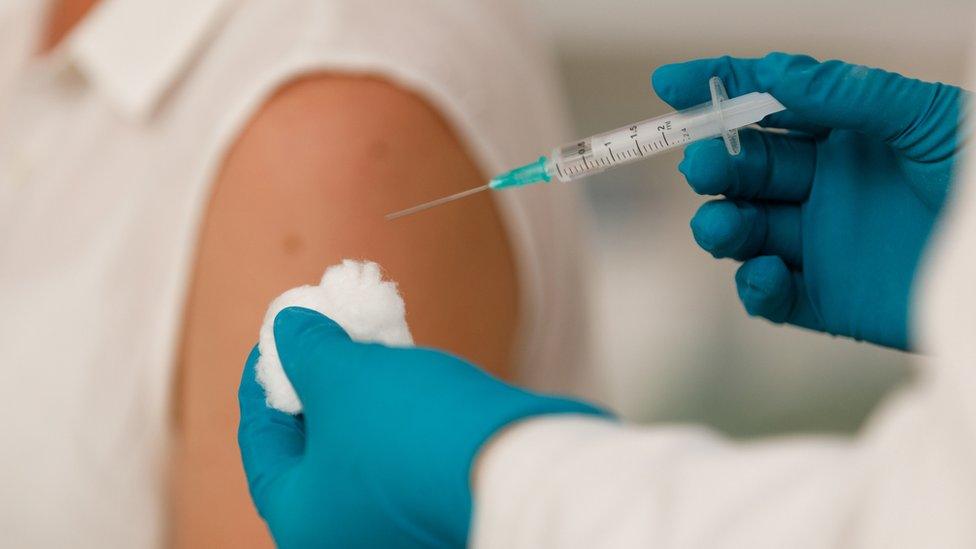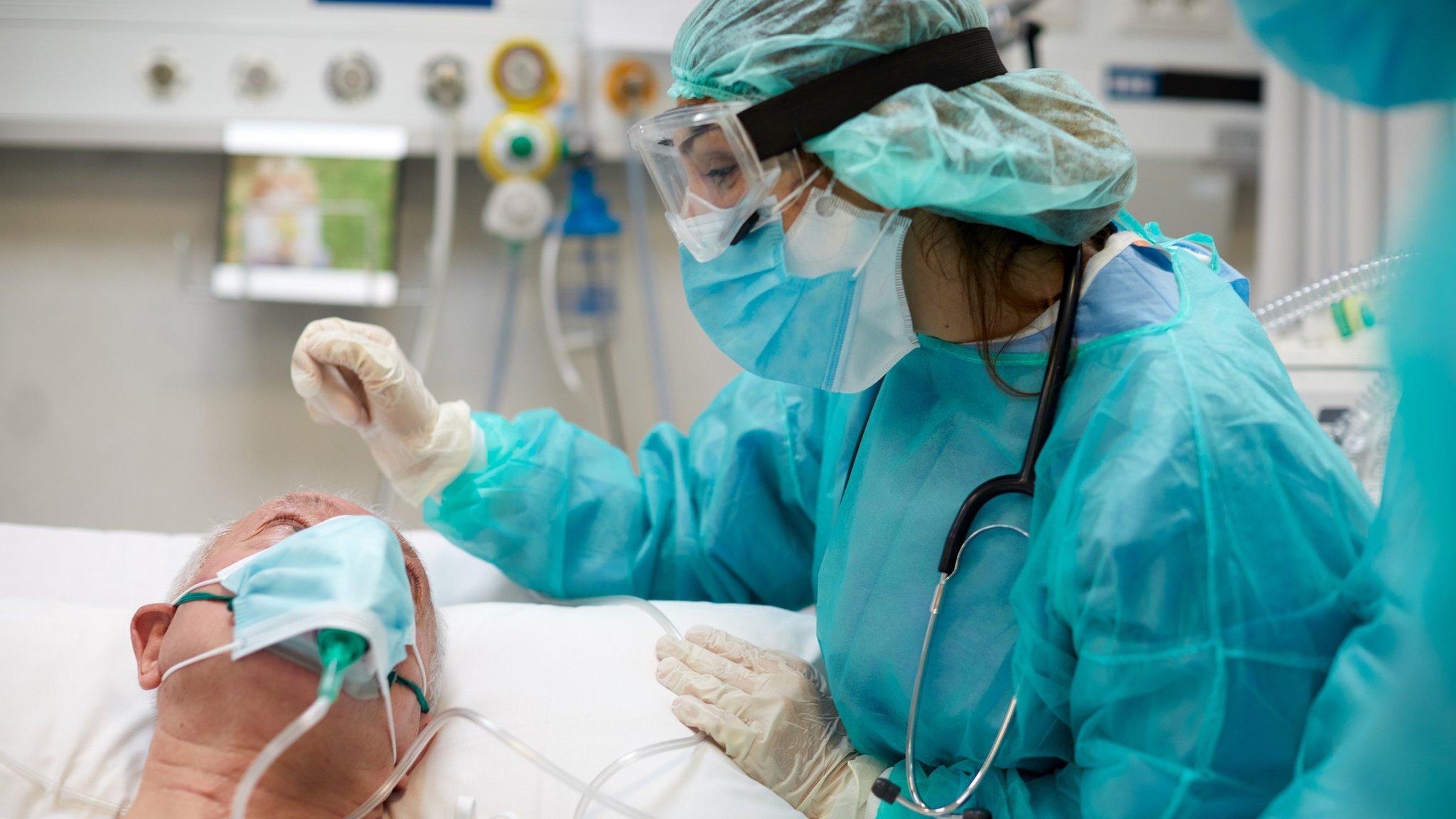Covid: One in 220 estimated to be infected in Wales
- Published

Another 5,678 Covid vaccines were given out across Wales on Thursday
It is estimated 14,100 people have Covid-19 in Wales, according to the latest weekly swab survey by the Office for National Statistics (ONS).
That is the equivalent of one in 220 people - or 0.46% of the population.
This is a slightly up on the previous week's estimate - which was that 13,000 people had Covid - but ONS says the position in Wales is uncertain.
Meanwhile, the Covid case rate has risen slightly but numbers with Covid in hospital remain comparatively low.


What does the infection survey tell us?
The ONS takes thousands of swab samples, external in Wales, so this can pick up people who may not know they have Covid.
Analysis of tests among different ages show the estimate is 1.6% of 10-year-olds in Wales had Covid, in the week ending 6 August. The proportion was 0.8% of 20-year-olds were infected, but it drops to 0.34% of 40-year-olds and 0.2% of 60-year-olds.
For the rest of the UK, the estimates are that infections are high in England and Northern Ireland and decreasing in Scotland.
It estimates infections for one in 70 people in England, one in 40 in Northern Ireland and in Scotland it is estimated at one in 140.
What about case rates?


Wales' case rate has risen a little over the last six days after falling for 18 consecutive days - to 144.1 cases per 100,000 (highest point for 11 days)
Denbighshire still has the highest case rate (274.8) in Wales, although it continues to fall
There have been an average of 649 positive cases a day in the last week, compared to 600 the week before.
The "doubling time" - the estimated time it would take for cases to double at this rate - is 42 days.
The proportion of under 30s positively tested is 49% of the latest daily case number
The latest R-number range is between 0.8 and 1.1 Rt
Local hotspots remain mostly in north Wales - the highest around Rhyl, Denbigh, Colwyn Bay and Chirk - but only six communities out of 410 in Wales have had fewer than two positive tests in the last week.
Hospital numbers remain stable
We've seen very little change in Covid hospital numbers - the key indicator - in recent days.
Admissions with confirmed and suspected Covid were running at a daily seven-day average of 14, compared with 12 last week and the sorts of numbers we were last seeing in mid-May.
There were 13 admissions - six in Cardiff and Vale - with Covid admissions now making up 1.3% of all hospital admissions.

We can see admissions were more than six times higher at the same point of the second wave.
On Thursday, there were 180 Covid patients in hospital beds - and the daily average was 186 for the week. It was 183 the week before. This is still similar to numbers we were seeing in mid-May.
These numbers include both recovering patients and those suspected of having Covid but waiting for test results.


When we just look at patients testing Covid-positive, there were 129 across hospitals in Wales. Cardiff and Vale had 38 of these; Betsi Cadwaladr, Aneurin Bevan and Cwm Taf Morgannwg had more than 20 patients each. The average number of confirmed Covid-19 patients was 132, slightly down on the 139 average the week before.
This is a 92% fall from the peak in January, although there was a record low of just seven patients on 27 May.
Twenty-five Covid patients - including 10 in Betsi Cadwaladr health board - were being treated in critical care or on ventilation on 12 August. This was up on the 19 in critical care the week before but we have been seeing similar numbers for nearly three weeks.
Non-Covid patients in critical care outnumber those with Covid by nearly six to one.

Two deaths were reported by Public Health Wales, which both occurred on Tuesday in Cardiff and Vale and Betsi Cadwaladr health boards.
There have been five deaths, which occurred in the last week. The daily average is 0.7; it was an average of 30 deaths a day at this same point in the second pandemic wave.
Meanwhile, another 5,678 vaccination doses were given out on Thursday, taking the total of first doses to 2,310,898. A total of 2,132,116 people have now been fully vaccinated - that's 67.3% of the total population.
- Published28 May 2024

- Published13 August 2021

- Published9 August 2021
